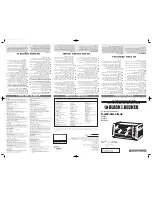
Water piping — general information
4a
20
Part Number
550-110-290/0219
CGt
GAS-FIRED WATER BOILER — Series 2 —
Boiler Manual
General piping information
If installation is to comply with ASME or Canadian
requirements, an additional
high temperature limit
is
needed. Install control in supply piping between boiler
and isolation valve. Set second control to minimum
20°F above setpoint of first control. Maximum allowable
setpoint is 240°F. See Section
10b
for wiring.
A
low water cutoff device
is required when boiler is
installed above radiation level or by certain state or lo-
cal codes or insurance companies. Use low water cutoff
designed for water installations. Electrode probe-type
is recommended. Purchase and install in tee in supply
piping above boiler.
Use
backflow check valve
in cold water supply as re-
quired by local codes.
If boiler is installed in a closet, it is recommended to
insulate the boiler piping in the closet to lower the closet
air temperature.
Pressure/temperature gauge
Install pressure/temperature gauge in the tee on the
supply piping (as shown in drawing on page 3).
Relief valve
Install relief valve vertically in ¾” tapping on side of
boiler. See Figure 16, page 21, and the tag attached to
the relief valve for manufacturer’s instructions.
Circulator and 3-way valve
1. See
Figure 38, page 64.
2. Apply pipe dope to fittings and install in boiler
supply and return tappings in the order shown in
Figure 38.
3. Install circulator, flanges and gaskets.
4. Complete by soldering copper fittings and 3-way
valve in the order shown in Figure 38.
5. Pull 3-way valve Molex and harness through jacket
top left conduit opening.
6. Insert Molex connector into mating connector on
3-way valve. Make sure that valve body is in correct
position as shown in Figure 38.
The circulator is shipped loose (wiring pre-attached to
boiler). Pipe the circulator on the return line only, as
shown on page 3 and page 64. Pipe the expansion tank to
the suction side of the circulator as shown in Figure 16,
page 21. Install an air separator in the supply piping.
Always install the system fill connection at the same
point as the expansion tank connection to the system.
Figure 16 shows typical near-boiler piping connections.
To avoid water damage or scald-
ing due to relief valve operation:
• Discharge line must be connected to relief valve
outlet and
run to a safe place of disposal
. Ter-
minate the discharge line to eliminate possibility
of severe burns should the valve discharge.
• Discharge line must be as short as possible and
be the
same size as the valve discharge con-
nection
throughout its entire length.
• Discharge line must
pitch downward
from the
valve and terminate at least 6” above the floor
drain where any discharge will be clearly visible.
• The discharge line shall
terminate plain, not
threaded
, with a material serviceable for tem-
peratures of 375°F or greater.
•
Do not pipe the discharge to any place where
freezing could occur.
•
No shutoff valve
shall be installed between the
relief valve and boiler, or in the discharge line.
Do not plug or place any obstruction in the
discharge line.
•
Failure to comply
with the above guidelines
could result in failure of the relief valve to op-
erate, resulting in possibility of severe personal
injury, death or substantial property damage.
•
Test the operation of the valve
after filling and
pressurizing system by lifting the lever. Make
sure the valve discharges freely. If the valve fails
to operate correctly, replace it with a new relief
valve.
















































